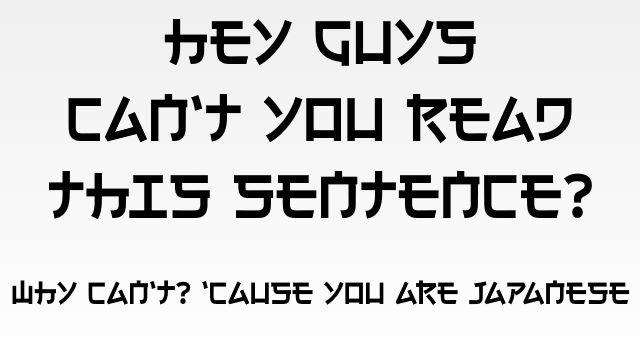
“Hey guys, can’t you read this sentence? Why can’t? ‘Cause you are Japanese.”
A Japanese coworker showed this to me. As an American, I can read this easily because I was not raised in the Japanese education system. If you know any Japanese people try this out on them and see if they can read this. My wife couldn’t read it. My bilingual daughter had a bit better luck, actually. It goes to show that it is true that bilingual people have a different approach to problem solving than regular people. This goofy font is meant to look Japanese, borrowing from actual Japanese writing to come up with an alphabetical substitute. A Japanese person will see jibberish while someone who was not raised to read Japanese can read this fairly easily.
This is an example of cognitive bias. One’s biases shape how they perceive the world. It shows how people need to expand their thinking in order to change their worldview. We are constantly lied to, such as diamonds being rare gems, soy being healthy for you, fluoride being good for your teeth, flu vaccines can prevent you from catching the flu, chemotherapy being able to treat cancer, etc. And as this example shows, cognitive bias can depend on the context of one’s culture. We’re taught that Pearl Harbor was a sneak attack out of the blue, or that aluminum airplanes could slice straight through solid steel-frame buildings like butter on 9/11. The good news is that it appears that increasingly these days, more and more people are waking up to the fact that they’ve been lied to about a great number of things. Welcome to the Great Awakening.

